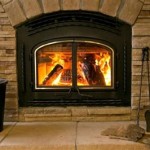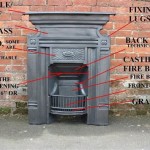How To Make A Rustic Wood Fireplace Mantel
A fireplace mantel serves as a focal point in many living spaces, offering an opportunity to showcase personal style and add character to a room. A rustic wood fireplace mantel, in particular, evokes a sense of warmth, comfort, and natural beauty. This article outlines the process of crafting a rustic wood fireplace mantel, detailing the necessary steps, materials, and considerations to achieve a successful and aesthetically pleasing result.
Before embarking on the project, it is crucial to understand building codes and safety regulations related to fireplace mantels. These regulations often dictate the permissible distance between the mantel and the firebox opening, as well as the type of materials that can be used. Compliance with these codes is essential for ensuring the safety of the structure and its occupants. Consultation with a local building inspector or qualified contractor is recommended to obtain specific guidance on local regulations.
The selection of wood is a critical decision that significantly impacts the final appearance and durability of the mantel. Reclaimed wood, such as barn beams or salvaged lumber, is a popular choice for rustic mantels due to its inherent character, including knots, cracks, and weathered surfaces. These imperfections contribute to the authentic, aged look that defines rustic design. Alternatively, new wood can be used and treated to achieve a similar effect. Common wood species suitable for rustic mantels include oak, pine, cedar, and walnut. The choice depends on personal preference, budget considerations, and the desired aesthetic.
Once the wood is selected, it must be properly prepared. This typically involves cleaning the wood to remove dirt, debris, and any loose bark. Depending on the condition of the wood, it may also be necessary to sand the surface to create a smoother texture. However, excessive sanding should be avoided, as it can diminish the rustic character of the wood. The goal is to remove any sharp edges or splinters while preserving the natural imperfections that contribute to the mantel's unique appearance.
Planning and Design
Effective planning is paramount to a successful mantel construction project. This includes determining the desired dimensions of the mantel, considering the proportions of the fireplace and the surrounding room. A common guideline is to make the mantel slightly wider than the firebox opening and to position it at a height that is visually balanced with the overall architecture. Detailed measurements should be taken to ensure accurate cutting and assembly of the wood components.
The design phase also involves selecting the desired style and features of the mantel. Rustic mantels can range from simple, minimalist designs to more elaborate configurations with decorative corbels, supports, or shelves. The design should complement the overall style of the room and reflect personal preferences. It is helpful to create sketches or use design software to visualize the finished product and refine the design before commencing construction.
When considering the design, it is important to account for the method of attachment. The mantel must be securely fastened to the wall to ensure its stability and prevent it from falling. Common attachment methods include using heavy-duty brackets, lag bolts, or construction adhesive. The choice of attachment method depends on the weight of the mantel, the type of wall construction, and the desired level of permanence. Proper planning and execution of the attachment strategy are essential for the safety and longevity of the mantel.
Cutting and Shaping the Wood
With the design finalized and the wood prepared, the next step is to cut the wood to the required dimensions. Precision is important to ensure that the mantel fits properly and looks aesthetically pleasing. A circular saw, miter saw, or hand saw can be used for cutting, depending on the size and shape of the wood. It is recommended to use safety glasses and other appropriate safety equipment when operating power tools.
After cutting the wood, it may be necessary to shape or refine the edges to achieve the desired look. This can be done using a hand plane, a sander, or a router. For a rustic look, it is generally best to avoid sharp, perfectly straight edges. Instead, consider rounding the edges slightly or creating a slightly irregular surface texture. This can be achieved by using a rasp or file to remove small amounts of wood from the edges.
If the design calls for decorative elements, such as corbels or supports, these should be fabricated and attached to the mantel at this stage. Corbels can be carved from solid wood or constructed from smaller pieces of wood that are glued and screwed together. The attachment method should be strong and durable, using screws, nails, or construction adhesive as appropriate. Attention to detail is important to ensure that the decorative elements are securely attached and aesthetically pleasing.
Finishing Techniques
The finishing stage is where the mantel truly begins to take on its rustic character. Various finishing techniques can be employed to enhance the wood's natural beauty and create an aged, weathered appearance. One popular technique is to apply a stain to the wood. The stain should be carefully selected to complement the existing décor and achieve the desired color tone. Darker stains often enhance the rustic aesthetic, while lighter stains can create a more subtle, natural look.
Before applying the stain, it is important to prepare the wood surface properly. This may involve sanding the surface lightly to remove any imperfections and opening the wood pores to allow for better stain penetration. The stain should be applied evenly, following the manufacturer's instructions. Excess stain should be wiped off to prevent a blotchy or uneven finish. Multiple coats of stain may be required to achieve the desired color intensity.
After the stain has dried completely, a sealant or topcoat should be applied to protect the wood from moisture, scratches, and other damage. Common sealant options include polyurethane, lacquer, and varnish. These coatings provide a durable, protective layer that enhances the wood's longevity. A matte or satin finish is typically preferred for rustic mantels, as it creates a more natural, understated look. The sealant should be applied evenly, following the manufacturer's instructions. Multiple coats may be required for optimal protection.
Installation and Safety Precautions
The final step is to install the mantel onto the wall. This should be done carefully and securely, following the chosen attachment method. Before installation, it is essential to ensure that the wall is strong and stable enough to support the weight of the mantel. If necessary, additional support should be added to the wall, such as framing or blocking. The method of attachment, whether using brackets, lag bolts, or construction adhesive, should be appropriate for the weight of the mantel and the type of wall construction.
When installing the mantel, it is crucial to maintain the required clearances between the mantel and the firebox opening, as specified by building codes and safety regulations. These clearances are designed to prevent the mantel from overheating and potentially causing a fire. The clearances typically vary depending on the type of fireplace and the type of mantel material. Accurate measurements and precise installation are essential to ensure compliance with these safety regulations.
After the mantel is installed, it is important to inspect it carefully to ensure that it is securely attached and that there are no potential hazards. The mantel should be able to withstand reasonable weight and pressure without shifting or moving. If any issues are detected, they should be addressed immediately. Regular maintenance, such as cleaning and dusting, will help to keep the mantel looking its best and prevent the buildup of dust or debris that could pose a fire hazard. It is also advisable to have the fireplace and mantel inspected periodically by a qualified professional to ensure their continued safety and proper functioning.

Diy Rustic Fireplace Mantel The Cure For A Boring

Diy Rustic Fireplace Mantel Domestically Speaking

Diy Rustic Fireplace Mantel Domestically Speaking

Diy Rustic Fireplace Mantel The Cure For A Boring
:max_bytes(150000):strip_icc()/ablossominglife-4151b41015a64193a437e981c3aad037.jpg?strip=all)
17 Diy Fireplace Mantel Plans

Diy Rustic Mantel Farmhouse Fireplace Decor

Weathered Barn Wood Fireplace Mantel Diy Pine And Prospect Home

How To Build A Rustic Faux Beam Mantel Toolbox Divas
:max_bytes(150000):strip_icc()/sandandsisal-bdc76ad938a44d28ae9e23ef6c9fa331.jpg?strip=all)
17 Diy Fireplace Mantel Plans

How To Build And Hang A Mantel On Stone Fireplace Shanty 2 Chic








